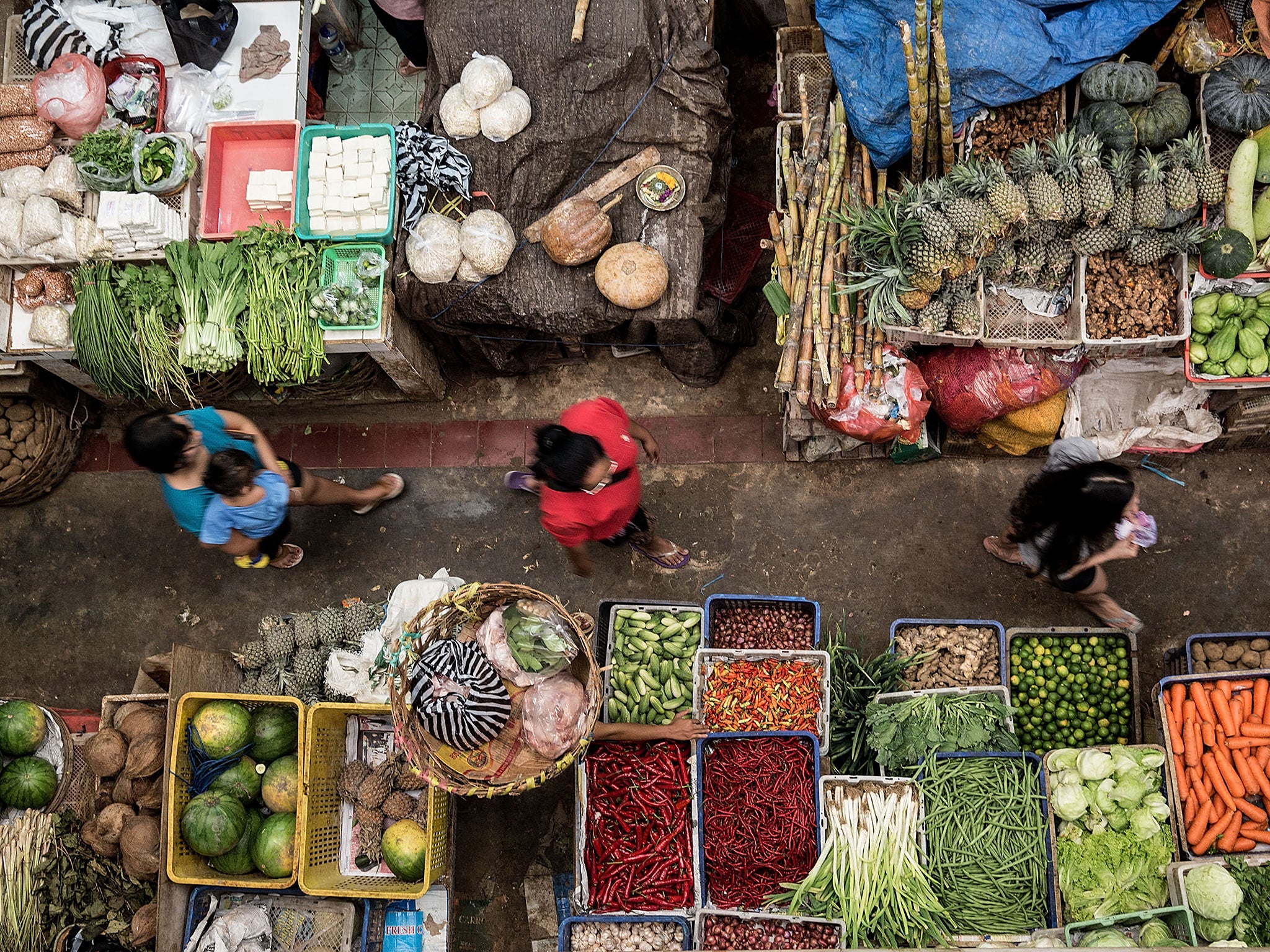National cuisines: What ingredients make dishes from different cultures distinctive?
It is hard to deny some flavours evoke dishes from certain parts of the world

How would you define what it is that makes British cuisine British? Or how are we able to recognise when we are eating an Italian dish, or Indian, Greek or Vietnamese for that matter?
While it's hardly fair to stereotype an entire national cuisine with a few basic ingredients – most are of course just far too varied and diverse – it is hard to deny some flavours evoke dishes from certain parts of the world.
Indeed, it is not unknown for countries to almost be defined by their "iconic dishes".
Comparisons are also regularly made between the food eaten in different parts of the world. In February this year, The Independent reported on a set of photographs released by US restaurant chain Sweetgreen which looked at "School Lunches Around The World."
Of course many national cuisines rely heavily on the availability of certain ingredients – although that may not necessarily explain the difference between, for example, German and French food.
However, data blog Priceonomics has sifted through 13,000 recipes from food website Epicurious, which tags each of the meals as a "cuisine", in order to attempt to find what it is that sets "Moroccan" food apart from "American".
Here is what it found:
African
Caraway was found in eight per cent of recipes tagged as African
American
The wholesome apple was America's most distinctive ingredient, included in five per cent of recipes
Asian
Sesame oil was used in 30 per cent of recipes under the Asian tag
Cajun/Creole
Okra was decided as the ingredient which set this cuisine apart. Used in eight per cent of recipes
Central/South American
Avocado was the healthy ingredient used in 13 per cent of recipes
Chinese
Peanut oil – used in 16 per cent of recipes
Eastern European/Russian
Something of a surprise here – egg noodle was found in seven per cent of recipes
English/Scottish
The humble currant, beloved of scone and tea-cake eaters across the country, was found in ten per cent of recipes
French
Tarragon is France's defining ingredient, featuring in five per cent of recipes
German
Sauerkraut was used in 15 per cent of recipes
Greek
Quite a high hit-rate with this one – feta cheese was found in 31 per cent of recipes
Indian
Black mustard seed oil is listed as India's most distinctive flavour, although it was only used in five per cent of recipes
Irish
Whiskey – found in eight per cent of recipes
Italian
Romano cheese was found in five per cent of recipes
Japanese
Katsuobushi, or dried, smoked tuna, found in nine per cent of recipes
Jewish
The apricot was found in seven per cent of dishes
Mediterranean
Feta cheese – found in ten per cent of dishes
Mexican
Once again, the avocado coming into its own, at 15 per cent
Middle Eastern
Roasted sesame seeds were found in nine per cent of dishes
Moroccan
Caraway, found in ten per cent of dishes
Scandinavian
Maybe could have guessed this? Herring, although it was only found in eight per cent of recipes
Southern states
Corn grit was found in nine per cent
Southwestern
Black beans were found in eight per cent of dishes
Spanish/Portuguese
Saffron, an essential paella ingredient, was found in 11 per cent of dishes
Thai
Galangal, from the ginger family, was found in 11 per cent of dishes
Vietnamese
The Thai pepper actually came out as the most distinctive flavour in Vietnam, being used in 14 per cent of dishes
As the blog acknowledges, many of the recipes are from US sources, and so the results of the study are skewed towards how Americans see cuisines from different nationalities. It also appears to lump together certain countries – one of the tags is simply "African" – while the US itself is looked at in a lot more detail.
The ingredients that make national dishes national dishes
Show all 26It does however throw up a few interesting insights into world cuisine. While a number of nationalities do succumb to stereotype, such as the German's use of sauerkraut, others are somewhat more surprising.
Who would have thought the ingredient that really sets England and Scotland apart from the rest of the world was the humble currant?
In order to find what it describes as each region's "most distinctive ingredient", the blog looked at which ingredients often appeared in its recipes, compared to others from around the world. This is not a list of the most common ingredients therefore, and may explain some of the more odd ingredients included in the list.
Subscribe to Independent Premium to bookmark this article
Want to bookmark your favourite articles and stories to read or reference later? Start your Independent Premium subscription today.

Join our commenting forum
Join thought-provoking conversations, follow other Independent readers and see their replies